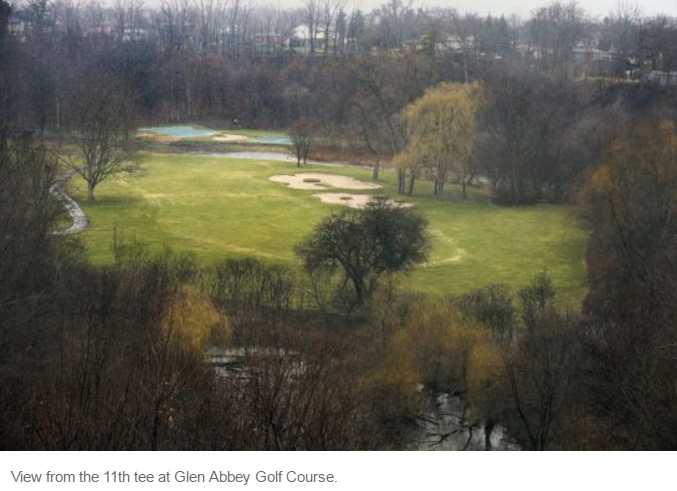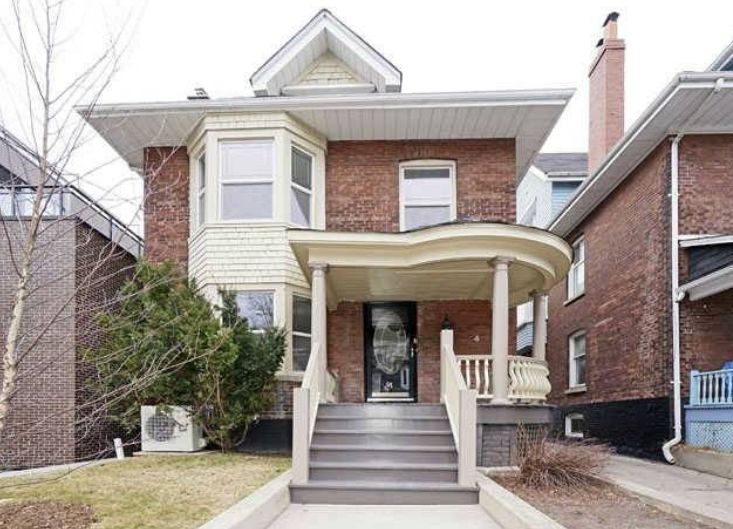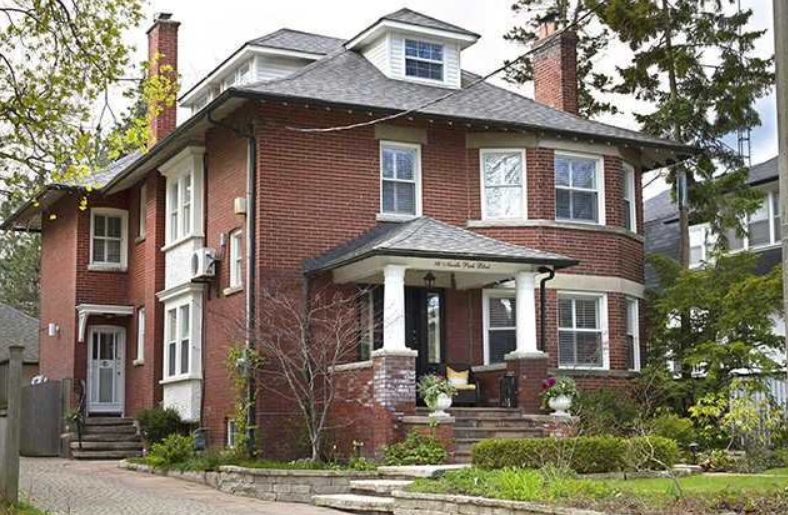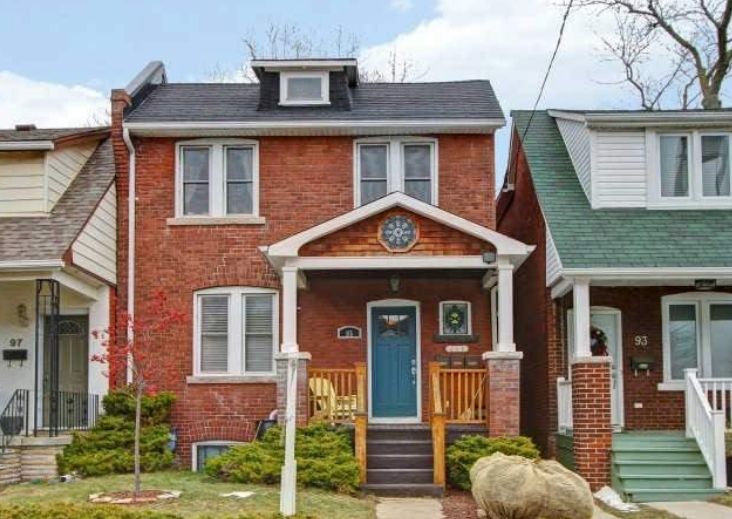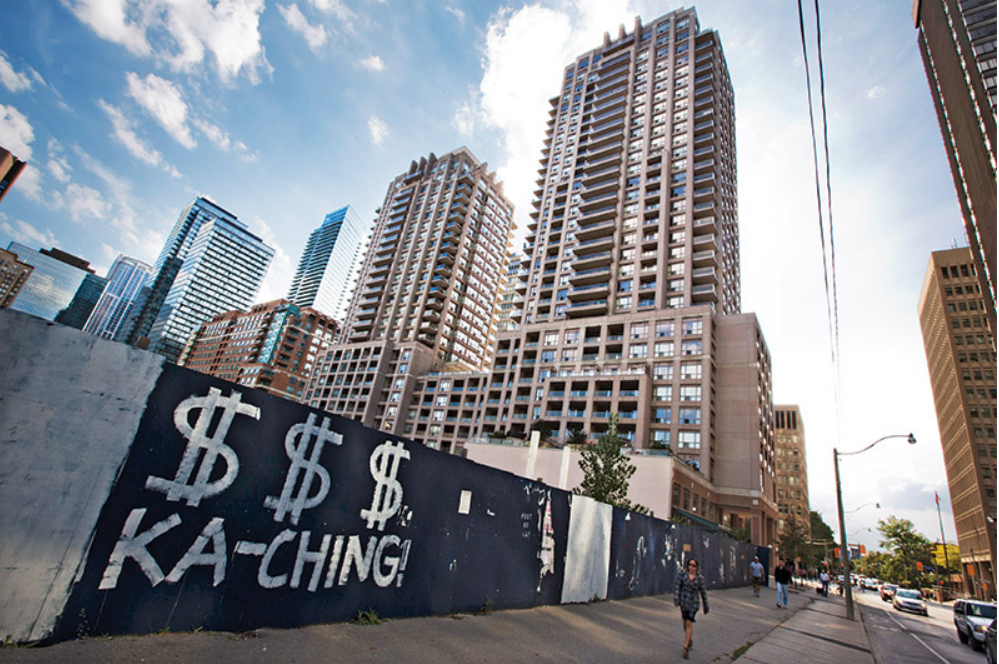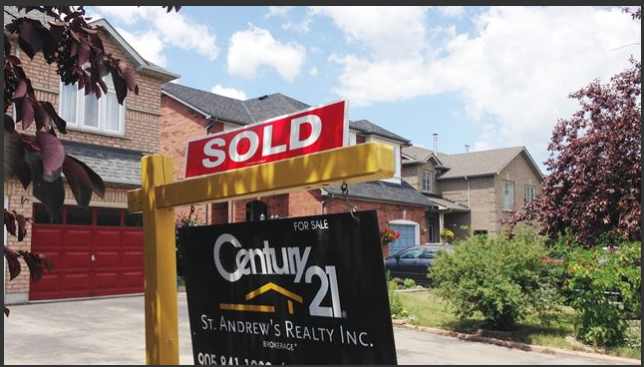Even on a cloudy day, the view from Katie Trusler’s kitchen table is the perfect vantage point for the golf course that once backed onto her house.
Trusler doesn’t shy from saying it was this view that brought her family from Toronto to Aurora a decade ago. And it was this view that she recalls on the cold and wet day she moved in, feeling like she was “finally home.” And now, when it comes down to it, it’s this view she will miss the most.
“We will be looking at a cul-de-sac behind our house now,” said Trusler, pointing to a street on a marked-up development plan for a 184-house subdivision planned for the property by Geranium Homes and ClubLink corporation.
“Nobody is against development, but to squeeze so many homes on such little land is insane.”
For years, golf courses were seen as an assurance that there would always be green space nearby. And many residents say they paid a premium to have their home back onto pristine green space, even at the risk of the odd golf ball hitting their window.
But in recent years, the city’s hot housing market — and a downswing in the number of new golfers — has turned sprawling GTA golf courses into lucrative real estate investments. World-renowned Glen Abbey in Oakville and Copper Creek in Vaughan are among a half-dozen other GTA courses that have recently confirmed plans to eventually replace their fairways with subdivisions.
“If you are owner of a piece of property . . . it’s just become so valuable that you can make so much money off it by selling it for real estate than you can operating a golf course,” said Scott Simmons, CEO of Golf Canada. “And because there are so many courses in the GTA, people will simply find another place to play.”
But municipalities say the trend is troubling for a host of reasons: firstly, the extensive development plans for those properties are not on par with local official plans; secondly, they take away much needed green space; and the complexity of the projects is forcing the matter to the Ontario Municipal Board, where the outcome is uncertain.
“Cities all across the GTA are being confronted by developers who bought up golf courses and are trying to change them from being designated as private green space and convert them into massive residential developments,” said Oakville Mayor Rob Burton. “It totally disrupts orderly development of the GTA and local official plans . . . by putting masses of people where they aren’t planned for.”
The Glen Abbey development, owned by ClubLink, calls for the construction of more than 3,000 homes, offices and retail.
Rai Sahi, CEO and chair of ClubLink, which owns courses in Ontario, Quebec and the U.S., said much of it comes down to simple economics.
“The golf course business is getting challenging. Firstly, courses are open only half the year,” he said. “Truthfully, as a businessman if there was an opportunity to develop golf course into residential . . . it’s a better deal to build.”
Sahi added that he has no further plans to redevelop his properties. He said Glen Abbey will remain open for the next few years.
But Burton is calling on the province to intervene.
Burton said the premier must “protect the integrity of her provincial growth plan,” which set population and growth targets that many municipalities say they have already met.
He’s not the only one taking aim at the province. Upset politicians from 40 municipalities in Ontario are planning to attend a summit in May to discuss the issue, said Aurora Councillor Tom Mrakas, who spearheaded the event.
“The OMB process is unfair to municipalities, at the end of the day, and that’s why the summit is getting so much traction,” Mrakas said. The event, he adds, has morphed into an OMB reform summit, since the two issues are inextricably linked. He says the goal of the summit is to present a co-ordinated voice to the province asking for “meaningful reform.”
A spokesman for the Ministry of Municipal Affairs and Housing said the province hopes to launch a review of the OMB this spring.
“The government continues to see a need for an independent appeal body that can hear planning matters that are often complex, in order to protect long-term public interests,” a ministry spokesman said. “At the same time, we recognize the need for continuous improvement to the land-use planning and appeal system.”
Golfing golfing gone
If the last few years are any indication, golf courses are not just venues for perfecting your short game. All across the GTA, they have become prime real estate investments too. Here’s a snapshot of GTA golf courses that have plans for development.
Glen Abbey

View from the 11th tee at Glen Abbey Golf Course.
In November 2015, the owner of this prestigious course announced plans to pave over fairways to build a subdivision with 3,000 homes, retail and office space. ClubLink Corp., which owns dozens of golf courses in North America, bought the 93-hectare course for $40 million in 1998. The town of Oakville implemented an interim control bylaw in February to study the impact of the proposal. In the mean time, the club says “it’s business as usual,” and plans are in place to host the Canadian Open there this year.
Highland Gate
In November 2014, the historic Highland Gate Golf Club, dating back to the 1930s, hosted its last round. The developer, ClubLink, announced its intention to develop the 41-hectare parcel of land into 180 or so homes and a condo building, citing an “oversupplied local market.” Earlier this year, after a number of heated public hearings, the proposal is now in front of the Ontario Municipal Board.
Saw-Whet

ANDREW FRANCIS WALLACE
Golfers take advantage of an early start to the season at Saw-Whet golf course off Bronte Road in Oakville.
A plan to develop on the golf course came before the Town of Oakville in March 2014. When the town didn’t approve the plan in the 180 days required under the provincial planning act, developer Bronte Green Corporation appealed to the Ontario Municipal Board. The proposal includes 760 residences on 55 hectares. The matter is still in before the OMB and is expected to continue to the end of the year.
Mandarin

VINCE TALOTTA
Alvin Yeung with caddy at Mandarin Golf and Country Club Golf.
The private 18-hole club on a 56-acre property in Markham accepted a $22 million offer from Fieldgate Developments in 2013. The sale became official in 2014, but the club entered into a ground lease to continue to use the golf course and facilities for up to three years. It’s not clear when that lease runs out.
York Downs

DAVID COOPER
Meghan McDougal of York Downs Golf and Country Club.
In the summer 2015, the majority of members of the York Downs Golf & Country Club in Markham voted to sell the 167-hectare facility to a consortium of developers for $412 million. According to a newsletter released in the fall by developer Kylemore Communities, 32 hectares of land that are unimpeded by the golf course will become the first phase of development. The club is expected to operate for another five to six years.
Copper Creek
One of Vaughan’s best 18-hole golf courses, which opened in 2002, could be half the size if the developer’s plan for the Kleinburg property is approved. In early 2015, developers Fieldgate Homes and TACC Construction, presented the city of Vaughan a preliminary plan for up to 800 homes, townhomes, low-rise and condos for half the site. A nine-hole golf course would remain, in part, because the fairways sit on the protected Greenbelt.
Read the full post in Toronto Star GTA

